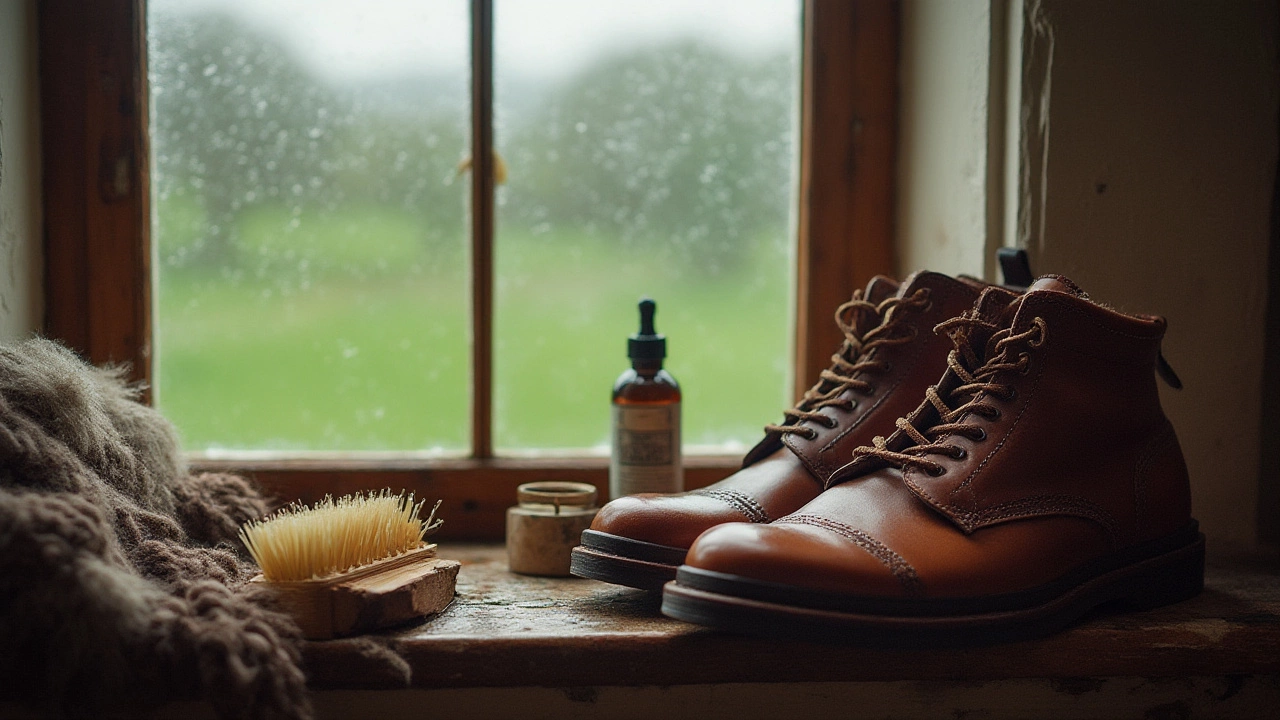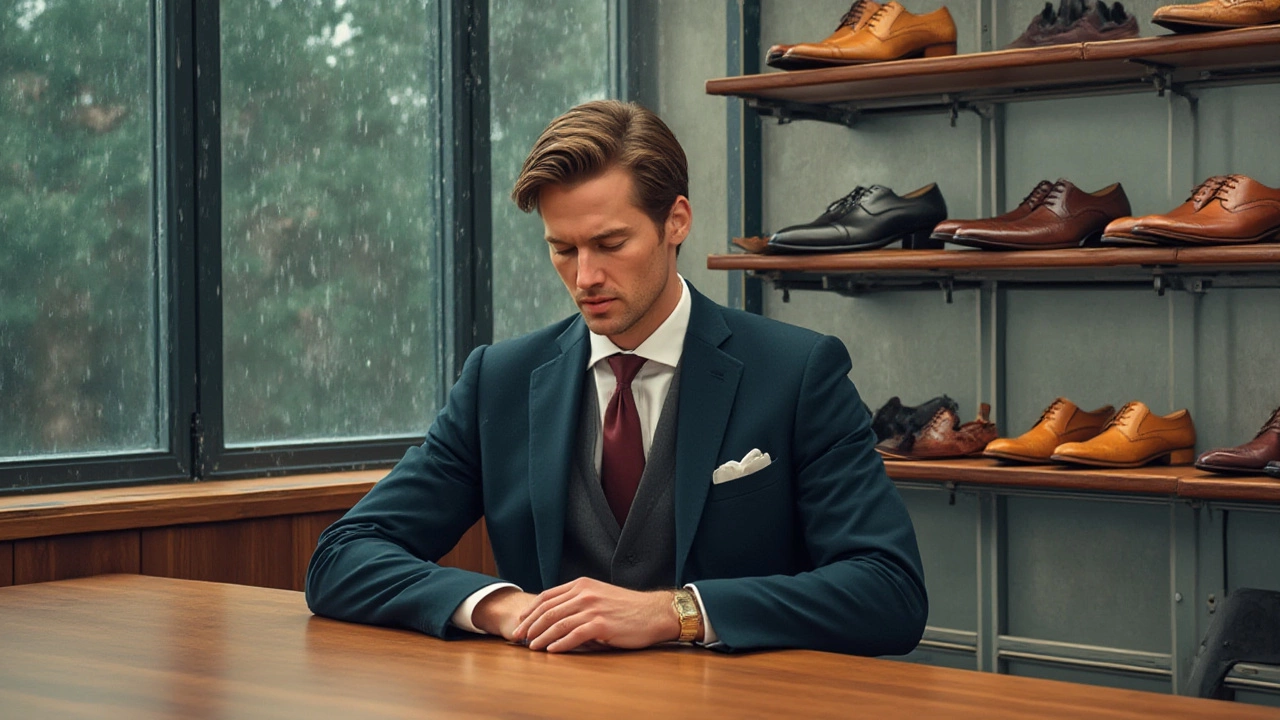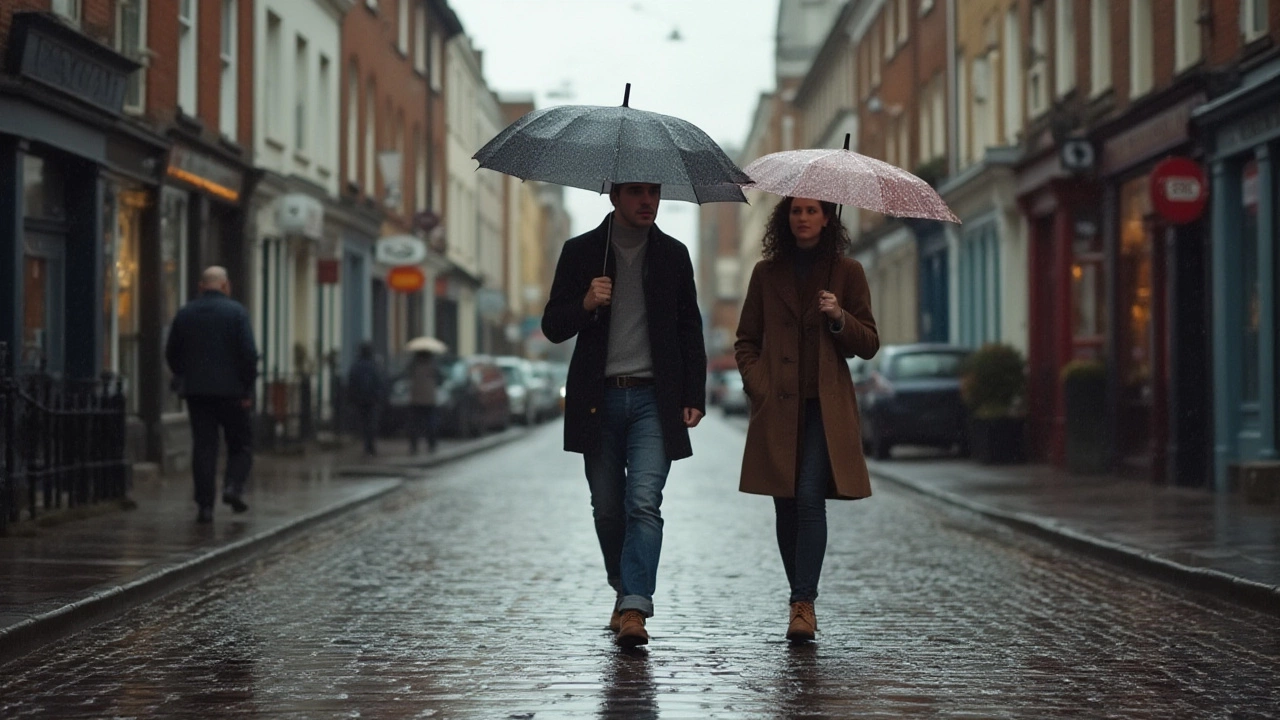Rain hits Galway for the fourth time this week, and you’re dashing through puddles like you're racing the Liffey Swim. In Ireland, shoes do more than finish an outfit—they’re your shield against moody skies, cobbled alleys, and weekday commutes along Grafton Street. Leather shoes have their own mythos here, a staple in school halls, boardrooms, and weddings alike. The question isn’t just about fashion or comfort—it’s about living smart in our uniquely unpredictable climate. So, is it wise to wear leather shoes every day across the Emerald Isle? Let’s walk through the facts, traditions, and the real-life demands you'll face.
Why Leather Shoes Are Loved in Ireland
If you grew up in Ireland, leather shoes are nearly a rite of passage. Remember picking out your first pair for secondary school? Clarks, Dubarry, Barker, maybe even a splash for a pair from Louis Copeland. Leather, especially if it’s high-quality and treated, stands up to Irish weather better than most fabrics. The breathability, the ability to mould to your feet, the fact that they last years if you mind them—it’s why most professionals in Dublin still swear by them for daily wear. Irish workplaces tend to value neatness; polished Oxfords or classic brogues are a bit like a good cup of Barry’s—essential, comforting. It’s not all tradition, though. Leather manages moisture better than faux alternatives, so your feet don’t stay squelchy during those sudden Cork downpours.
Not shockingly, Irish designers keep innovating. Take Dubarry’s deck shoes, a staple along the West coast. Their Galway boots merge practical waterproofing with classic style. Paul Byron Shoes in Mayo sells locally popular leather brogues that you’ll spot everywhere from office parties to Galway Races. The Irish market leans towards dark colours (black, tan, burgundy), easy to pair with both school uniforms and pub attire. Even tourists savvy to Irish style often spring for a pair as both a souvenir and a way to fit in.
Can Leather Shoes Handle Ireland’s Weather?
This is where things get tricky. On paper, leather is robust. But ‘robust’ gets tested at the Cliffs of Moher in February, or on Dublin’s slippery Luas platforms. Untreated leather absorbs moisture and, if you’re not careful, will start to warp, crack, or even grow mould, especially if you stash them damp at the end of the day. The Irish climate is the definition of “a bit soft,” meaning shoes must battle both sudden downpours and weeks of drizzle that soak through everything but wellies.
How does leather fare? First off, full-grain leather, which is thicker, does much better than corrected-grain or patent types. Most Irish-made shoes, and premium British brands sold here, go for full grain or at least decent calfskin. If the tannery work is proper, your shoes should resist a normal day’s rain. What if you get caught in an unexpected shower on your lunch break in Limerick? Quick tip: keep a microfiber cloth in your desk to blot and dry. Another must for Irish conditions is routine waxing or conditioning. Think of it as armouring up against misty strolls along Salthill Promenade. Waterproofing sprays (Collonil and Saphir, available at Galway cobblers and specialty stores) add a reliable barrier.
Still, rot and salt stains are sneaky. Dublin retail workers see the same frustrated faces dragging soaked shoes to cobblers after Christmas shopping trips. Invest in cedar shoe trees to draw out moisture overnight—they make a visible difference. Finally, never, ever dry your leather shoes on a radiator or in a hotpress. The heat warps them, ruins stitching, and will have your €150 brogues creasing before you’ve paid off the Revolut bill.
| Leather Type | Water Resistance | Best Use in Ireland |
|---|---|---|
| Full Grain | High (with care) | Daily wear, office, casual |
| Patent | Low | Occasional events |
| Suede | Very Low | Dry days only |
| Corrected Grain | Moderate | Casual, some office |

Daily Wear: Pros and Cons for Your Feet
Before you get too attached to those leather loafers, let’s break down what your feet really deal with. On the plus side, leather breathes far better than synthetic alternatives. Walk the field at the Ploughing Championships in September, and you’ll feel the difference—sweaty, plastic-lined trainers just don't compare. Leather also adapts to your foot shape over time, balancing firmness and flexibility, and if you’ve ever tried to break in a fresh pair of Doc Martens, you know what a difference a good fit makes.
But, every day? Here’s where health comes in. Constant leather shoe wear without rotation can raise your risks of fungal infections (that ever-present Irish damp!) and wear down the internal cushioning, especially if you’re pounding through college lectures in UCD or standing for hours in a busy Ennis cafe. Orthopaedic specialists from Tallaght Hospital often see bunions, plantar fasciitis, or arch collapse among those who never swap shoes. Irish podiatrists recommend at least every other day rotation—giving your shoes 24 hours to dry out, which stops bacteria and helps with longevity.
Mind the support. Cheaper leather shoes look nice but might not offer actual arch support, which matters if you’re walking the Ring of Kerry. Take the insoles seriously, or pop into a pharmacy for specialist inserts if you’re feeling aches. Socks matter, too—natural wool (like Irish knit socks from Connacht Woollen Mills) or bamboo pairs fight odour and let your feet breathe.
- Rotate between two or more pairs.
- Use shoe trees to soak up moisture overnight.
- Pick supportive insoles if you’re on your feet a lot.
- Choose natural-fibre socks—ditch synthetics on wet days.
No shoe revolution here, but every small step helps keep your feet healthy, especially under Ireland’s twelve types of rain.
Style and Practical Tips for Everyday Leather Shoe Fans
Irish fashion is constantly evolving—just look at what’s strutting down Dawson Street or the quirky takes on leather boots at Electric Picnic. Still, whether you’re local or just moved from abroad, you’ll notice that certain classics just work. Black leather lace-ups for interviews, Chelsea boots for a night at The Grand Social, or two-tone brogues for wedding season.
If you’re planning to make leather shoes your daily go-to, styling can be fun, not repetitive. Mix in different finishes: matte for casual days, shiny for big events, distressed leather for a vintage feel. Men often lean towards streamlined loafers or ankle boots; women embrace everything from tasseled loafers in vintage shops on Dublin’s Fade Street, to block-heeled oxfords paired with tights during those long Irish winters.
The Irish climate can be your style enemy or ally. Winter calls for thicker soles and darker tones; look for boots lined with shearling or faux fur for both warmth and waterproofing. Don’t forget waterproof leather sprays before a festival at St. Anne’s Park or a muddy weekend at Knockanstockan.
Some Ireland-specific shopping advice: If you want long-lasting wear, don't skimp on resoling. Cobblers are alive and kicking—from Sam Byrne’s in Dublin to Hogan’s in Cork. Many high-street stores, like Arnotts, now offer in-house shoe care, which makes maintaining your daily leather shoes less of a hassle. If you're fashion-forward, upcycling old pairs with colourful laces or topical dye jobs (think emerald green for a nod to Ireland) adds a playful twist.
Watch out for the ‘style tax’—a pair may look designer but be glued, not stitched. Stitching is sturdier for the weather here; go for Goodyear welt if you want your shoes to actually survive the parade season.

Long-Term Care: How to Make Leather Shoes Last in Ireland
Now, the real secret weapon of every Irish leather shoe lover? Maintenance. This isn’t glamourous, but if you want your €200 investment to last more than a Christmas or two, listen up.
- leather shoes Ireland: Always dry shoes naturally after a rainy day—never use a radiator.
- Once a week, clean surface dirt with a soft brush. Any mud from Phoenix Park trails or sand from Killiney—get it off before it sets.
- Use a nourishing cream conditioner (Saphir and Kiwi both sell reliable options in Irish supermarkets).
- Waterproof every fortnight during winter, or before you know you’ll get caught walking between pubs in Temple Bar.
- Polish, but go easy—over-polishing ruins the natural finish. A soft buff after application brings up the best shine.
- Store in a cool, dry corner. Hotpresses might seem handy, but they’ll warp Italian leather in weeks. If you’re stuck for storage, cardboard shoe trees from Penneys can work nearly as well as cedar for half the price.
Do these, and you’ll outlast most friends’ trainers. If your soles start to go thin, Irish cobblers can resolute most quality shoes for a third of the cost of new ones. Think about all those pairs of battered runners at the bottom of every Irish teenager's wardrobe—a good pair of leather shoes, with a bit of care, dodges that sad fate.
In Ireland, practicality works hand in hand with style. Leather shoes bridge generations, from Leaving Cert grads to old uncles in Mayo chats. If you’re willing to look after them, leather shoes can absolutely be your daily staple, rain or shine. The trick isn’t just picking the right pair—it’s knowing how to live with them, island weather and all.
